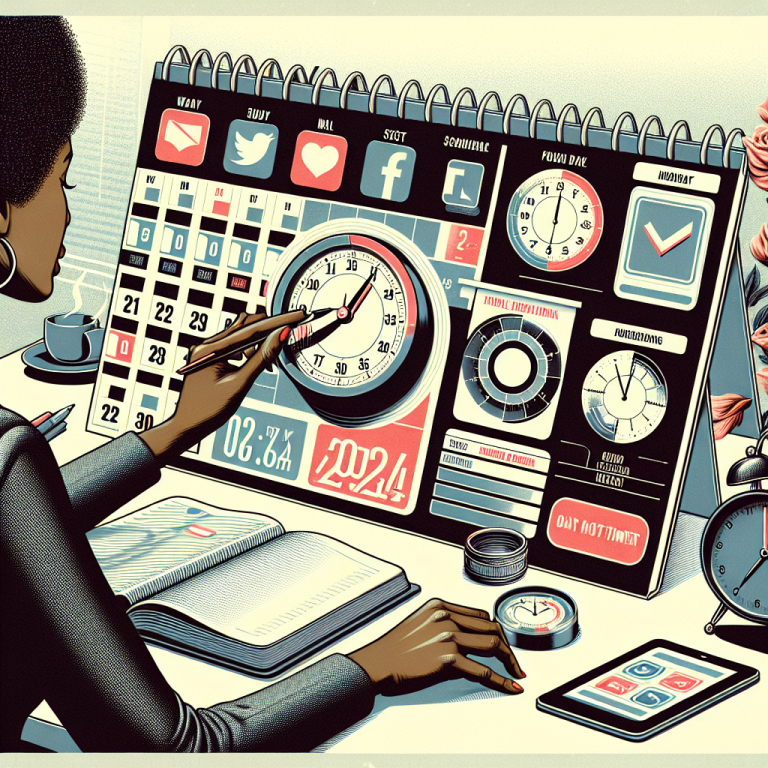Why Most Ads Fail and How You Can Make Yours Succeed
Understanding Your Audience
Defining Your Target Market
One of the biggest blunders I’ve seen is companies creating ads without a solid grasp of who they’re trying to reach. Defining your target market isn’t just about demographics; it’s about understanding their interests, pain points, and what keeps them awake at night. Connect on a human level, and the ad will resonate.
In my early days, I remember crafting an ad that seemed perfect in my eyes. I thought I knew my audience, only to find out later that I had missed the mark completely. Dive into research, conduct surveys, and engage with your audience on social media to get a clearer picture.
Don’t forget, your audience isn’t just data points. They’re people with feelings and aspirations. Remember that, and tailor your messaging to touch their hearts. This is the first step towards creating impactful ads.
Creating Buyer Personas
Buyer personas are a game-changer. Once you’ve done your research, it’s time to create detailed profiles of your ideal customers. These personas should encompass their demographic info, buying habits, and even their favorite places to hang out online.
I’ve learned that keeping these personas in mind while developing ad campaigns can drastically improve your messaging. It helps in crafting ads that speak directly to them, making your content feel more personalized and engaging.
Plus, having a solid persona helps everybody on your team align. It fosters a clearer understanding of who we’re communicating with, which is crucial when you’re brainstorming ideas. This common vision can spark innovative approaches and capture attention effectively.
Empathy in Marketing
Empathy is essential in advertising. Once you understand your audience, the next step is to show them that you genuinely care. Craft narratives around the challenges they face and highlight how your product can be a solution to their problems.
During a campaign I spearheaded, I made a conscious effort to tell stories that resonated at a deeper emotional level rather than just pushing a product. The result? Increased engagement and higher conversion rates. People like to feel understood.
By tapping into empathy, you create a connection that drives loyalty. It’s not just about the sale; it’s about building relationships. Your ads should be conversations, not lectures. This way, potential customers feel valued and are more likely to consider your offering.
Crafting a Compelling Message
The Power of Storytelling
Storytelling is a powerful tool in advertising. Everyone loves a good story, right? When you weave your product into a narrative, it becomes less about the hard sell and more about creating an experience. I like to think of it as painting a picture that connects the viewer to the product.
For instance, I once helped a startup craft a video ad that narrated a day in the life of a customer before and after using their product. The transformation was profound, and viewers felt inspired. They could visualize themselves in the story, making it much more relatable.
Remember, the story doesn’t need to be epic or grand – it just needs to be authentic. Authenticity sells! Be genuine and let your audience feel the emotions you want them to feel. It’ll make a world of difference in how effective your ads are.
Clear Call to Action
Every ad needs a strong call to action (CTA). This is where you guide your audience on what to do next. I can’t stress enough how crucial this is! Without a clear CTA, your viewers may appreciate the ad, but they won’t know what you want them to do – which is a missed opportunity.
Make your CTA bold and compelling. A lesson I learned the hard way was making CTAs too complicated. Keep it simple. “Sign up now,” or “Get your free trial today” works well. Just make sure it’s actionable and straight to the point.
The key here is urgency. Communicate why they should act now instead of later. Maybe there’s a limited time offer, or a reason related to their needs. You want them to feel they might miss out on something great if they don’t act immediately.
Visual Appeal
Humans are visual creatures. It’s vital to incorporate eye-catching visuals in your ads. Whether it’s photos, graphics, or videos, vibrant visuals can grab attention fast. Trust me; I’ve seen lackluster designs go unnoticed while stunning visuals stop people in their tracks.
Work with professional designers or use online tools that can help you create something beautiful, even if you’re on a tight budget. But remember, aesthetics are essential, but they shouldn’t overshadow your message. Find a balance between the two!
Also, make use of colors that evoke emotions related to your brand. Colors impact feelings and behaviors, so choose wisely. A well-designed ad can convey professionalism and trustworthiness – two things consumers look for when making decisions.
Testing and Optimization
The Importance of A/B Testing
Once your ad is live, don’t just sit back and relax. Use A/B testing to see what’s working and what’s not. I’ve found that even small changes in wording or imagery can lead to significant differences in performance. It’s all about iterations!
When I first started, I was hesitant to test. I thought my initial ad was perfect! But after running tests, I discovered that a slight tweak in the headline made a massive impact on click-through rates. The insights you gain from testing are invaluable!
Make it a routine to test different elements of your ads, like calls to action, visuals, and even audiences. Analyze the results, learn from them, and optimize your campaigns accordingly. It’s a continuous improvement cycle that pays off in the long run.
Analyzing Performance and Metrics
Keep a close eye on your ad performance metrics. Platforms like Google Ads and Facebook Ads provide detailed analytics that can help you understand how your ads are performing. From click-through rates to conversion rates, these numbers tell a story about your ad’s effectiveness.
When I track the performance, I take the time to dissect what’s working and what’s not. Not every ad will be a home run, and that’s okay! The key is to learn, iterate, and improve your strategy over time. You can’t fix what you don’t track!
Utilize these insights to steer your future campaigns. Knowing what resonates with your audience empowers you to create more effective ads. The more you understand your metrics, the better your advertising strategies will become.
Iterative Improvements
Advertising isn’t static; it’s dynamic. Always look for ways to refine and enhance your strategies. After a campaign ends, I sit down and review the results to identify learnings that can apply to future campaigns. It’s all about continuous enhancement.
A mentor once told me that every campaign is an experiment. Treat your advertising as a lab where you can learn from results and refine your approach. This mindset will keep your content fresh and appealing.
Ultimately, the goal is to find what truly resonates with your audience. Be prepared to pivot, and don’t be afraid to take risks! You’ll never know what might become the next breakthrough in your advertising efforts.
Building Brand Trust
Consistency Across Platforms
Brand consistency is crucial in building trust. People need to know they’re engaging with the same brand. I’ve witnessed countless businesses struggle because they present vastly different messages or visuals on different platforms. Stay unified!
Make sure your branding – including logos, color schemes, and voice – is consistent across all channels. This not only helps in recognition but also reinforces your brand’s message. It’s about creating a cohesive experience for your audience, no matter where they encounter your brand.
In my experience, when brands deviate too much from their core identity, it can confuse potential customers. Stick to what makes you, you! This solidifies trust and invites consumers to engage more deeply with your offering.
Engaging with Customers
Engagement isn’t just about selling; it’s about building relationships. Respond to comments, messages, and reviews. Show your audience that there’s a human behind the brand. In today’s market, people crave connection.
Whenever I can, I like to take the time to respond personally to customer inquiries. It takes extra effort but fosters a sense of loyalty that’s hard to beat. Customers are much more likely to return when they feel they’ve been heard and valued.
Moreover, engaging with your audience can yield insights about what they care about most. Utilize feedback to improve your products, services, and advertising. It’s a win-win for everyone involved!
Delivering Quality Products and Services
Trust is ultimately built through delivering a quality product or service. No matter how well-crafted your ad is, if people have a bad experience with your brand, they won’t come back. Invest in your offering!
In my early career, I over-promised in my marketing and under-delivered with my services. It was a learning curve, for sure! But once I focused on ensuring quality, I saw my brand trust skyrocket. When you deliver value, word of mouth becomes your best form of advertising.
Always strive to exceed expectations; this will encourage customers to rave about your brand. Ultimately, the combination of excellent service, engagement, and consistent messaging builds an unshakable foundation of trust.








